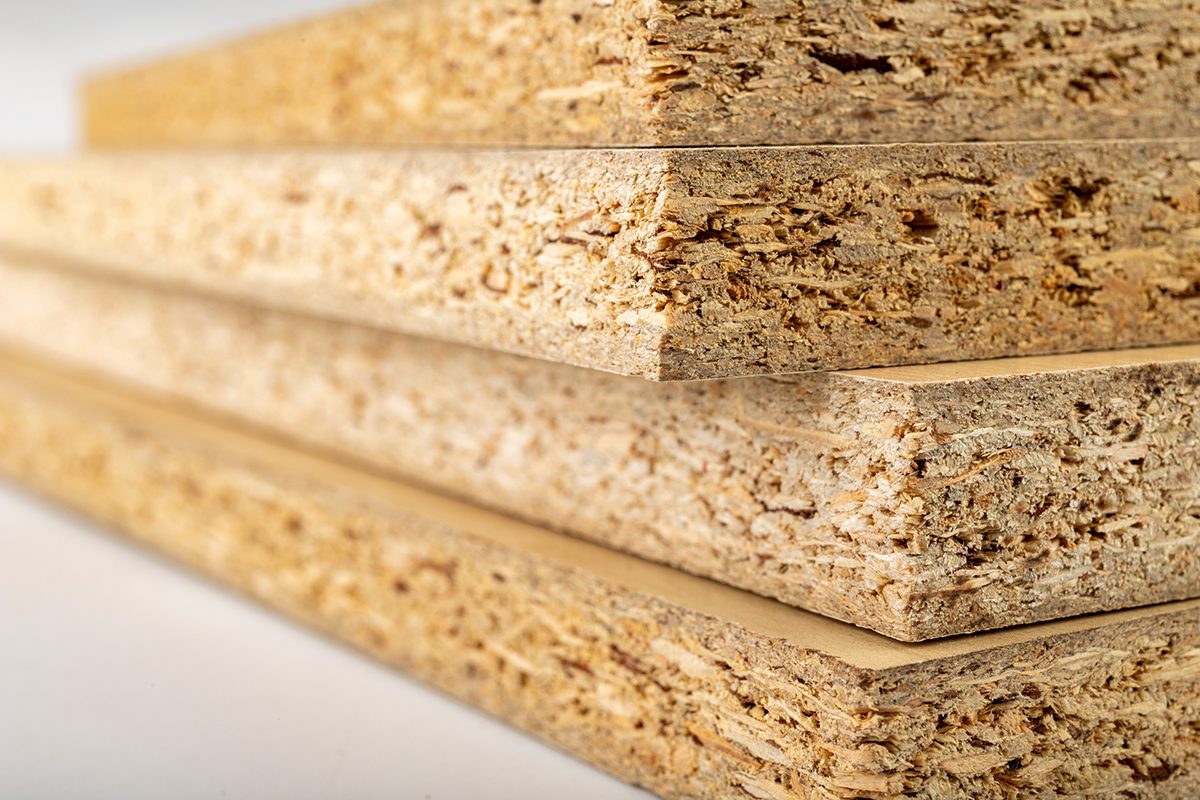

From Fees to Freedom: Richr’s Game-Changing Wealth Strategy in Real Estate, by Jason Rubin, and Glenn Orgin
Have you ever thought about why it costs 6% to…
January 9, 2024
Table of Contents:
Medium-density fiberboard is a highly versatile building material that is inexpensive and relatively durable. Medium-density fiberboard is fantastic for shelving, storage cabinets, and decorative projects. The smooth surface of MDF is also perfect for painting.
We provide you a free home valuation and a breakdown of your closing costs to show you how much you will save and the amount of cash you will receive at closing
Or Call Us +1844-957-4247
MDF is an acronym for medium-density fiberboard. It’s a wood substitute and is taking over the industry as helpful material for decorative products and home furniture. Unfortunately, MDF is often confused with plywood. If you aren’t familiar with MDF wood, we have the answers to your questions about the product.
Medium-density fiberboard (MDF) is a commonly used engineered wood product. MDF is created by breaking down hardwood or softwood residuals into wood fibers. These fibers are then combined with wax and a resin binder, that are formed into panels by applying high temperature and pressure. MDF is usually denser than plywood.
Medium-density fiberboard is similar in its affordability and versatility to plywood and engineered wood products. However, MDF is better than others in certain situations because it is easy to work with. MDF does not have knots, grain, or warping, and its smooth surface saws easily without leaving splinters, burns, or tear-outs. As a result, MDF is an excellent choice for light carpentry projects.
MDF comprises bits and pieces of wood sawdust and shavings created as a by-product of industrial wood mills. The wood fibers are dehydrated and mixed with resin to create panels. The panels are compressed under heat and pressure and form a hard shell. Large machines then sand the panels to give them a smooth finish, and then they are cut into MDF planks with fixed dimensions. MDF boards are sold primarily in either half or three-quarter-inch sheets. The thickest sheets can cost up to more than $50. There are also MDF planks that are fire retardant and resistant to moisture.
MDF is a more affordable option than wood. However, plywood is also an alternative and an affordable option. Both materials perform just as well as wood for various projects, including furniture, cabinets, shelves, and decorative accents such as wainscoting. Still, choosing between MDF or plywood should be dependent on your project.
MDF boards and plywood contain natural wood and are engineered; however, they are created differently. MDF planks start as wood fibers and are glued together with resins, then pressurized with high heat and cut into panels. Plywood starts as thin layers of wood from peeler logs and is then pressurized. Both MDF and plywood come in sheets with different grades and thicknesses.
The two products are similar, but they are not the same. MDF and plywood have their strengths and weaknesses based on the type of construction.
Here are the primary differences:
The thickness of the material determines the price, but overall, MDF is less expensive than plywood.
Plywood is made with wood strips rather than pieces of wood, so its surface looks more like natural wood. High grades of plywood are very smooth and do not have any knots. MDF has no grain and is not as smooth as plywood.
MDF is denser and heavier than plywood. For projects where you will need to lift, hold, or clamp panels in place or construct something that requires an overhead reach, this may cause an issue.
It is essential to reinforce MDF if you are using it to build shelves or other weight-bearing furniture. Plywood has more flexibility than MDF, so it’s easier to bend when used to create curves. Also, plywood won’t expand, contract, or warp, even under extreme temperatures.
MDF creates a more sawdust than plywood. If you’re cutting MDF, It’s best to work in a ventilated area and wear protective goggles when working with MDF.
MDF is best for detailed cut-outs on furniture, frames, and doors. It won’t crack or splinter like other materials when sharp edges or cuts are made, unlike plywood, which has rougher edges and is not suited for fancy curves.
Plywood has exposed edges that need to be finished, so they are not unprotected. This requires some type of banding or molding. MDF does not require banding because there are no layers at its edges.
For projects in which you will paint the material, MDF is a better choice due to its smooth surface and lack of grain. You will want to start with an oil-based primer and then paint over it. For plywood, stains look great on the material, especially higher-grade plywood.
MDF is not as strong as plywood, and doesn’t take as well to screws. Therefore, plywood would be a better option for a project where you will be drilling or screwing into the wood.
MDF is not very water-resistant and can get warped easily. Therefore, you should not build outdoor furniture with MDF. In contrast, plywood is more durable to the elements. It will eventually get damaged by continued exposure to water but is a better alternative to MDF.
Both materials contain formaldehyde, volatile organic compounds (VOCs), and lung and nervous system irritants. One way to reduce the irritants is by painting, priming, sealing, or staining the MDF or plywood.
Indoor furniture and other decorative uses are best completed with MDF. The fiberboard is also suitable for intricately carved designs, trims, and painting. Plywood is best for outdoor uses such as outdoor furniture, framing walls, building floors, kitchen crafting, and bathroom cabinets. Projects that do not curve work best with plywood.
Medium-density fiberboard (MDF) sometimes performs much better than natural wood. MDF is created from resin and recycled wood fibers that have been pressed to produce thick boards that remain stable in all weather conditions. There are several different grades of quality and thicknesses at various price points.
It’s time to buy smarter. Richr gives you cash back helping you buy the home of your dreams.
Call us now on 1-844-957-4247 or Start Searching Your Home NNow!
You will want to handle medium-density fiberboard with care, especially full-size MDF sheets that can be difficult to carry. Also, MDF is more fragile than natural wood or plywood and can be more easily damaged and scratched.
Be wary of water on untreated MDF boards. The swelling and fracturing that occurs when water is spilled on the MDF can be damaging. Luckily, there is now moisture-resistant MDF available.
MDF tends to create a lot of dust, not just run-of-the-mill dust but thick sawdust. So make sure you seal off your work area, cover any immovable items you wish to protect, and be prepared to vacuum afterward.
Most MDF contains urea-formaldehyde, a suspected carcinogen. Until it’s fully sealed, MDF continues to off-gas. So when you’re working with density fiberboard, do so outdoors or in a well-ventilated part of the home.
MDF is made with wood fibers that are broken down and pressurized together. Most MDF boards comprise 82% wood fiber, 9% urea-formaldehyde resin glue, 8% water, and 1% paraffin wax.
The raw materials to create MDF go through a process before they are pressurized together:
This process creates the medium-density fiberboard, which is then cut into the desired dimensions.
If you are strictly paying attention to cost, MDF is the best choice for a home project. However, outside of cost, there are projects suited better for other types of wood products.
Kitchen cabinets are an excellent project for hardwood plywood. You would not want to use MDF for this type of project. The plywood is a better option.
For built-in cabinets, credenzas, and other more decorative projects, MDF can be used. Still, if the natural charm of wood is desired, even if it’s the texture showing from underneath a coat of paint, hardwood plywood might be the better choice.
If dust is a concern, then plywood is a better choice. The fineness of the particles used to make MDF means it generates a lot of dust. Contractors working with MDF would do their best to cut and sand outside or ensure plenty of ventilation indoors if that isn’t an option.
Outdoor projects are not suitable for MDF. The product is only good for interior use as the engineered MDF wood is not usually moisture and temperature-resistant.
MDF is similar to natural wood when you work with it on home projects. The material is easy to see and great for creating detailed wood designs. MDF is also pliant and suitable for smaller projects such as bookcases and cabinets. It is also accessible to pain and very budget-friendly.
MDF is more fragile than plywood and more prone to water damage. It also creates more dust than plywood when cut and almost always contains urea-formaldehyde, which is suspected to cause health issues.
Yes, you can use MDF for furniture and several other projects, including:
MDF is an excellent product but does have some weaknesses. The medium density fiberboard can be weak when bent and under tension. The interlocking fibers held together by glue are not strong enough to
endure a lot of movement, which causes the MDF to crack. Avoid screwing nails and drilling into the product.
MDF and HDF are both engineered wood products made of wood fibers . These fibers are mixed resin adhesives, subjected to high pressure and heat to form panels that have a consistent density. HDF is thinner, denser, heavier, stronger, and more expensive, while MDF is easier to shape and use.
It’s time to buy smarter. Richr gives you cash back helping you buy the home of your dreams.
Call us now on 1-844-957-4247 or Start Searching For Your Home Now!
Understand the features, negatives, and positives when using various products, including traditional wood, plywood, and MDF wood. Understand the type of project and what you are trying to achieve. For example, MDF is a great product but has its limitations. Make sure you strike a balance between price and the best product for your desired outcome.
If you’re looking to buy or sell a house and would like to discuss your option, Richr can help you!
Our fully licensed Concierge Team is here to questions and provide free, objective advice on how to get the best outcome with your sale and purchase.
Ready to get started?
Call us now on 1-844-957-4247 or enter your basic info
below. Our concierge Team will be in touch shortly to help.
Remember, this service is 100% free and there’s never any obligation


If you want the Richr team to help you save thousands on your home just book a call.

